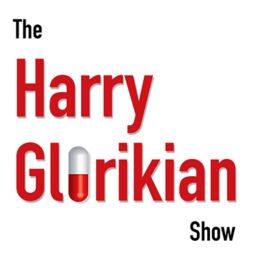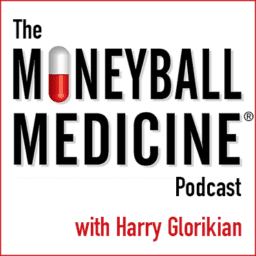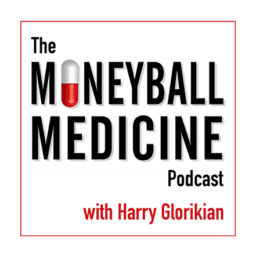The Great Healthcare Reset: The Opportunity COVID Has Given Us
Whether we are starting to see the light at the end of the tunnel or if the worst is yet to come, the COVID-19 pandemic has undeniably altered much of everyday life for billions and changed the business landscape in numerous industries. Nowhere have these changes been felt as hard as in healthcare. But out of the chaos of COVID is an opportunity we aren’t likely to get again for some time: the chance for healthcare to reset to set right the inadequacies and disparities rife in today’s systems. Time for innovation at a pace that is revolutionary and allows new and emerging players to compete (and win) against current incumbents. The ability to create and utterly transform a system that is outrageously expensive and often leads to poor outcomes into one that is data-driven, collaborative, and embraces technology for better patient care.
Let’s Embrace Collaborative Science.
This has long been the status quo in fields such as epidemiology and genetics, where large observational studies of thousands of people require a teamwork approach to scientific research. Through large consortia, scientists have uncovered countless genetic variants that predispose people to diseases such as Type 2 diabetes or aortic aneurysms and are working to identify the best test for latent tuberculosis infection in high-risk populations in the U.S. But this type of research teamwork is unusual and virtually unheard of in some science labs, where fear of getting scooped can prevent researchers from even talking with fellow scientists about their work—let alone working together.
The common enemy of COVID-19 inspired hundreds of scientists around the world to work together, even volunteering their expertise and equipment, to decode the viral genome at an unprecedented pace and perform essential experiments aimed at unlocking the many unknowns about Sars-COV-2 infection. What’s more, this database, the COVID-19 National Scientist Volunteer Database, which has been assembled, now includes scientists from all 50 states, Canada, Guam, and Puerto Rico, can be called to action when future biological threats emerge.
But this is just a small number of the thousands of current and former scientists who have knowledge and expertise that could be useful in any number of situations, from pandemics to weather crises to natural disasters—and who would be willing to lend help as needed. One would think that at the national level, this sort of information would be fairly easy to come by—after all, academic scientists routinely submit basic information about their research in grant applications. Many countries have similar frameworks and may already have such a system in place that could be leveraged to identify experts at a moment’s notice when needed. What’s missing is a scaled-up version of this, one that also includes scientists who have left the lab bench behind but who may be working in administrative positions or in industry.
This is the type of collaborative scientific environment that should remain after COVID-19 is a distant memory. The technology to migrate in this direction is no longer a dream but a reality that we should be implementing now.
Technology is Essential
If there’s one thing that has been made crystal-clear in the wake of COVID-19, it’s the outsized role that technology plays in maintaining our industrial and social practices and the beneficial role it has in keeping humans connected. But healthcare, for all its reliance on technology, has actually lagged behind other industries in its implementation for numerous reasons (payment systems, regulation, lack of a truly competitive environment, and more).
Take seeing the doctor. Virtually everyone who has a smartphone or computer has used video conferencing tools such as Skype, Google Hangouts, or FaceTime to keep up with relatives who live in distant cities or to hold conference calls for work for the past several years. But the idea of seeing a doctor using telemedicine, either over the phone or video, has failed to draw significant utilization until COVID.
In their haste to prevent the spread of infection, many patients found their doctors would no longer hold routine or non-urgent appointments in person. What should have been an obvious solution, moving to online or telehealth visits, many hospitals and health systems seemed caught blindsided and struggled to implement vendor solutions reliably. Patients and providers complained about faulty connections and impersonal feel, providers decried the uncertainty surrounding reimbursement and technologically challenged patients feared that the service would become standard even after the need passed, potentially leaving them without convenient alternatives for care.
But these are challenges that can be addressed. First, we need to ensure our network service providers can adequately meet the technical demands. The current lack of broadband internet in many rural areas must be resolved. The benefits go beyond access and equity in healthcare. In addition, legislators and administrators need to create a regulatory environment that makes it easier for health systems to access HIPAA-compliant vendor products. Lastly, the reimbursement of providers using telemedicine should be set at appropriate levels and maintained even after the pandemic ends.
Telehealth can alleviate long appointment wait times, bring specialists to regions where none exist, and reduce health disparities. The technological investments and legislation required to encourage telemedicine to be a more regular component of health care delivery are worthwhile investments—regulators, payors, and legislators should do whatever needs to be done to keep this moving forward.
Healthcare technology goes beyond telemedicine, however. Connected devices, such as the Wi-Fi enabled Withings scale or Kinsa thermometer, can be used to collect necessary health information and send it wirelessly to a doctor or integrate with a patient’s electronic health record. Applications of connected devices currently span from prenatal care to monitoring senior health and are growing weekly.
Remote Work will be the new norm—even in healthcare
March saw virtually all companies send their employees home to work, save for essential workers. The impact has had immeasurable impacts on cities like New York City, Boston, and San Francisco: normally thriving biotech centers became ghost towns nearly overnight. Even pharmaceutical companies sent home workers who were able to continue their research online, and academic medical centers struggled with how to maintain costly and needed cell lines and animal models with mostly skeleton crews.
Several months in, both academia and industry have mostly adapted to this new normal, across the country. What’s more, some have announced that their employees can work from home permanently—even after the pandemic wanes. While these changes will alter the landscape of office-heavy cities, it presents new opportunities to reshape city living for the better.
Though physicians and some other healthcare providers, such as physical therapists, may not see a permanent change to Work from Home (WFH) policies due to their necessity to see patients in person, others, such as genetic counselors, some mental health providers, and even many primary care physicians can shift to a permanent or semi-permanent WFH situation more easily. While obviously driven by telemedicine, this is where the role of connected devices will shine. Imagine standard vital signs collected entirely by connected scales, blood pressure cuffs, blood sugar monitors, and more sent to your doctor working from a home office. Through a video appointment, your doctor can visualize rashes and other skin problems or test your range of motion with a specific range of movement exercises. The office visit for a routine checkup could be a thing of the past for patients who are generally healthy with uncomplicated medical histories. What’s more, patients can have as many family members or other caregivers as support when the appointment is for the return of complicated results or for situations where the patient needs the extra help. No more limitations based on how many people can fit in a room or restrictions on visitors due to pandemic policies.
It’s not difficult to see the significant benefits of this scenario. Improved efficiency for providers, elimination of the interminable delays in waiting or exam rooms as the doctor finishes with previous patients. It would not be a stretch to have availability to doctors 24-hours a day: imagine doctors who live and work in different time zones scheduling visits for people who work 2nd or 3rd shift when it’s convenient for both. While WFH is not the answer for all situations, hospitals and health systems should be encouraged to think outside the box for ways to integrate it into their business model to realize increased satisfaction, convenience, and potential cost-savings.
New healthcare winners will emerge
As I wrote in my book, Moneyball Medicine, if the difference between evolution and revolution is the speed of change, then healthcare is in a time of revolution right now. Just look at the pace at which things like genetic testing in cancer, widespread adoption of electronic health records, and telemedicine have occurred. While several tech companies like Apple, Google, and Fitbit, have made strong inroads into healthcare, at a time of such rapid evolution, the post-COVID time is perfect for new healthcare winners to emerge and for current healthcare titans who are unwilling to change to topple.
Telemedicine is one place where we can expect to see increased competition in the future. Patient-facing companies like Teladoc held relatively small shares of the overall patient market and few companies were ready to meet the B2B demand at the start of COVID-19. Those who were found themselves in tremendous demand. Almost 6 months after the switch to virtual care, growing pains are evident. Patients and providers complain about disrupted calls, video, and audio lag. Providers note missed appointments as patients don’t think about telemedicine in the same way as an office visit. Start-up telehealth providers that can bridge these gaps in service will be able to leapfrog existing players whose products lack the continuity health systems require. Emerging companies that can shift the patient mindset to grow acceptance of telemedicine will similarly see their market share grow over current sector leaders. No one should accept that the technological deficiencies will endure or that the top telehealth companies now will remain so in a year. Things are changing at too rapid of a pace.
The New Healthcare Paradigm
Thanks to COVID-19, the healthcare and biotech industries are facing unprecedented demands from patients and providers alike. Where other industries like the hospitality sector, for example, look forward to the return to “normal” pre-COVID conditions, healthcare leaders should do what they can to actively leverage the incredible transitions made in the past 6 months and turn them into something more permanent. This means working with legislators, investors, entrepreneurs, and patients themselves to find out what has worked—and what hasn’t. We don’t have to pull back on technologies like telemedicine and connected devices that have demonstrated potential and utility, even when there are some adjustments to be made. There are significant opportunities to improve outcomes, reduce health disparities, improve efficiencies, and encourage innovation if we boldly refuse to settle for the old status quo. While the tragedies of COVID-19 are still yet to be fully realized, we don’t have to add the missed occasion to transform healthcare among them.




